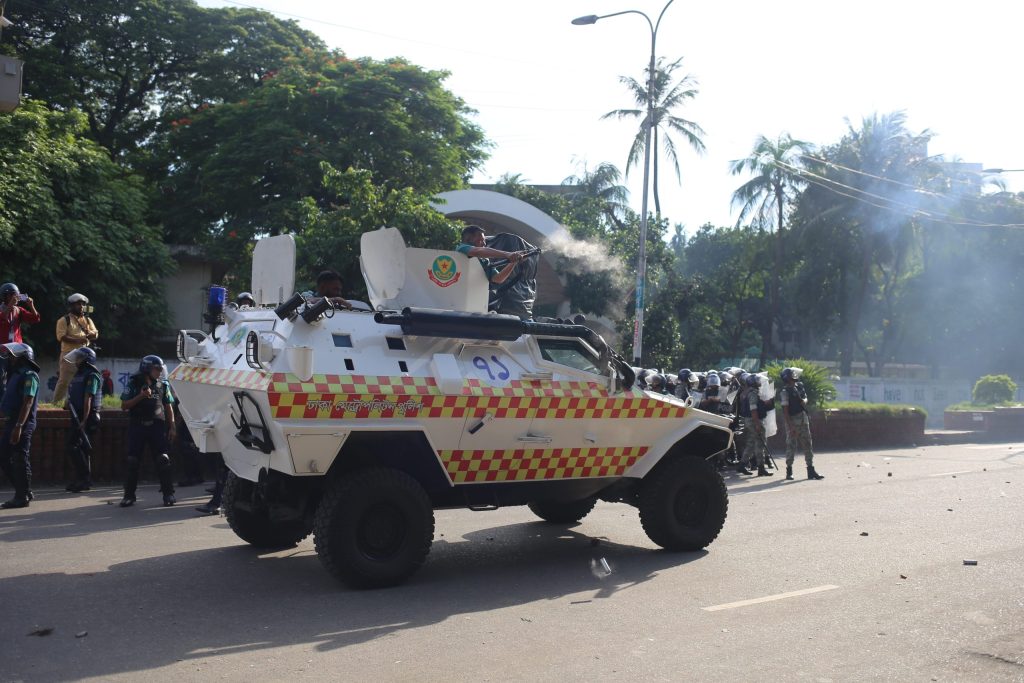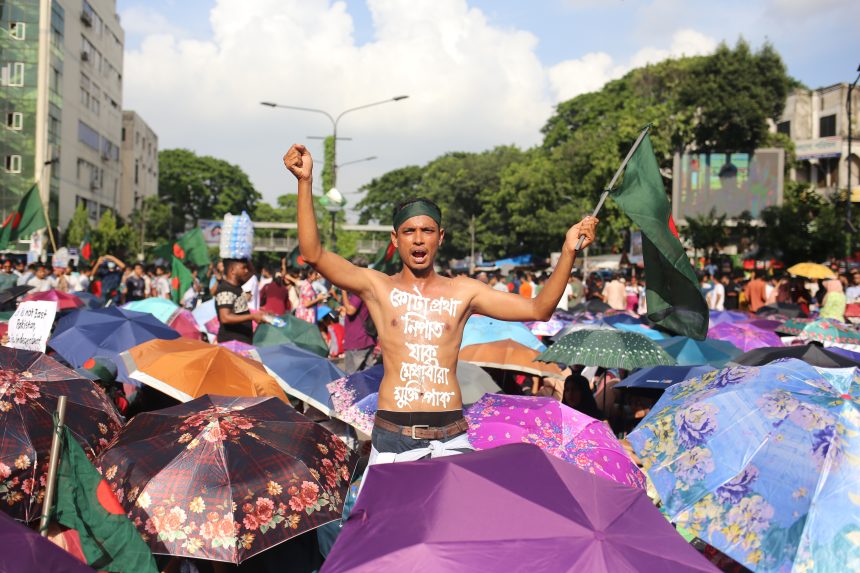On July 7 last year, Bangladesh witnessed a historic moment as thousands of students across the country took to the streets for the first time under the banner of the ‘Bangla Blockade’—a protest movement demanding reform of the government job quota system.
The anti-discrimination student movement leaders announced a one-point demand: to pass a law in Parliament limiting job quotas to a maximum of five percent, reserved only for underprivileged and backward communities as outlined in the Constitution. The protestors condemned existing quotas—particularly those for descendants of freedom fighters—as discriminatory and unjustified.
Movement leaders vowed to continue the blockade until their demand is met. Nahid Islam, a key coordinator of the movement and former adviser to the current interim government, made the declaration during a rally at Shahbagh intersection.
“From now on, our blockade programme will continue with a single demand—the unfair quota system in government jobs must be abolished across all grades, retaining only the minimum quota as needed,” said Nahid, now chief of the National Citizen Party (NCP). He announced that the next phase of the blockade would resume on July 8 at 3:30 PM, with students gathering in front of the Dhaka University Central Library.
Nahid warned that if students from residential halls were blocked from joining, the entire movement would surround the respective halls in protest. He also declared an indefinite class boycott starting from July 8, 2024, pledging to return to studies once their demand is fulfilled.
One of the key coordinators, Asif Mahmud Shojib Bhuyain, recounted the events in his book “July: Matribhumi Othoba Mrityu”, writing, “On July 7, we decided to move forward with a one-point demand—that the quota system must be reformed by passing a law, reducing it to five percent for the truly backward, and abolishing all unfair, discriminatory quotas in government jobs.”
On July 7, student protesters blockaded major roads and highways in Dhaka, Savar, Rajshahi, Chattogram, Barishal, Cumilla, Khulna, Rangpur, Sylhet, Dinajpur, and Gazipur, mainly around university areas.

In Dhaka, students occupied eight key points, including Shahbagh, Science Laboratory, New Market, Nilkhet, Chankharpul, and Agargaon, bringing traffic to a halt. The Shahbagh blockade alone lasted more than four hours, ending around 8 PM.
Jahangirnagar University (JU) students blockaded the Dhaka-Aricha Highway.
From Chattogram University (CU) students initially blocked Sholoshohor railway station, later moving to Bahaddarhat overpass after police interference.
Rajshahi University students staged a cultural protest with plays, poetry, and music, and blockaded the Kushtia-Jhenaidah highway.
In Barishal, university students formed a human chain and blockaded the Dhaka-Kuakata highway, despite heavy rain.
Cumilla University students protested at the Kotbari section of the Dhaka-Chattogram Highway.
Students from Hajee Mohammad Danesh Science and Technology University blocked the Dinajpur-Rangpur highway.
BSMRSTU students in Gopalganj blocked the Dhaka-Khulna highway.
SUST students in Sylhet blocked the Sylhet-Sunamganj highway.
As the ‘Bangla Blockade’ caused traffic disruptions nationwide and brought Dhaka to a standstill, government agencies took notice. That evening, members of an intelligence agency held a meeting with movement leaders Nahid Islam, Sarjis Alam, and Hasnat Abdullah to explore possible compromises.
Following the discussion, Hasnat Abdullah confirmed that they were invited to negotiate with a delegation representing the Prime Minister regarding their demands.


